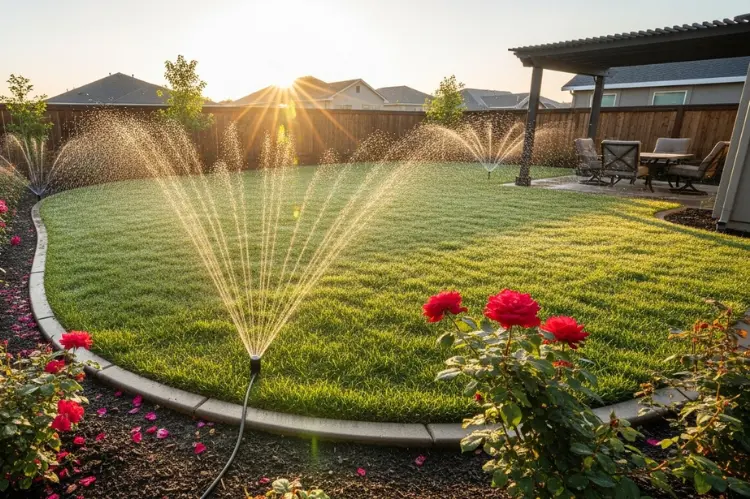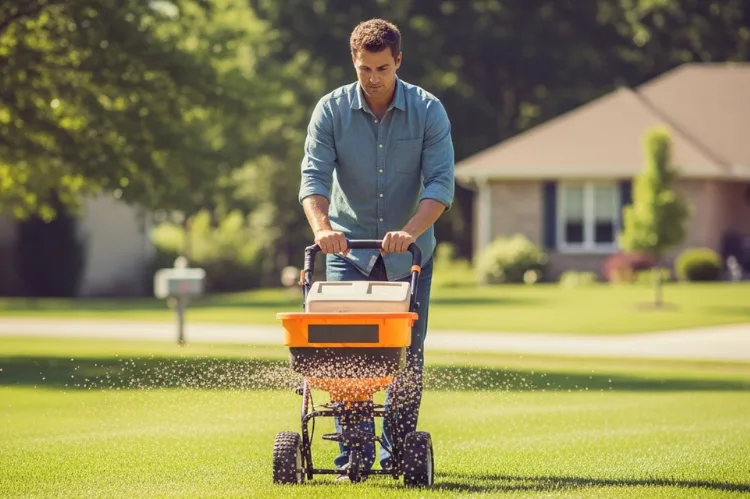A beautiful, well-maintained lawn enhances the aesthetics of a property and increases its value. Achieving a lush green lawn requires more than just occasional watering and mowing, it demands a systematic approach that encompasses proper maintenance, ideal grass types, and efficient tools.
Understanding these elements can take your lawn from average to exceptional, setting the stage for vibrant outdoor activities and gatherings. This article delves into lawn care tips that will help you create a space that’s healthy and resilient.
Choosing the Right Grass Type

The first step in achieving a lush lawn is selecting grass suited to your climate, soil type, and sunlight exposure. Cool-season grasses, such as Kentucky bluegrass and fescue, thrive in northern regions with cooler temperatures, while warm-season varieties like Bermuda and zoysia are more suitable for southern areas.
Each grass type has unique care requirements, from watering schedules to fertilization practices. Consider the daily sunlight your lawn receives. A well-suited grass variety will require less maintenance, reducing the need for fertilizers and herbicides.
Effective Watering Strategies
 Watering plays a critical role in maintaining a green lawn. The general rule of thumb is to water deeply but infrequently. Most lawns require about 1 to 1.5 inches of water per week, which includes rainfall. Early morning is the best time to water, as it allows the grass to absorb moisture before the heat of the day evaporates it.
Watering plays a critical role in maintaining a green lawn. The general rule of thumb is to water deeply but infrequently. Most lawns require about 1 to 1.5 inches of water per week, which includes rainfall. Early morning is the best time to water, as it allows the grass to absorb moisture before the heat of the day evaporates it.
It’s crucial to adjust your watering schedule based on weather patterns, such as rainfall and temperature fluctuations. Implementing smart irrigation systems can optimize this process, some modern systems even incorporate soil moisture sensors to deliver water more efficiently.
Pest and Weed Management

Insects and weeds pose significant threats to lawn health. Regular inspection of your lawn for signs of pest activity or weed encroachment can help you take action before problems escalate. Adopt integrated pest management (IPM) strategies, which combine cultural, biological, and chemical controls to minimize harm to beneficial organisms.
Maintaining your lawn’s health through proper watering and fertilization can significantly reduce weed competition. If you take a look at www.worx.com/lawn-garden/robotic-lawn-mowers/robotic-mowers.html, you’ll see how a robotic lawn mower can effectively manage both grass height and potential weed growth while saving time and effort. These mowers can navigate your yard, keeping grass evenly cut and enhancing growth for surrounding plants.
Fertilization Techniques
 Fertilizing your lawn is crucial for healthy grass growth and development. The type of fertilizer you choose will depend on the grass species, soil type, and specific nutrient deficiencies. A soil test can provide insights into nutrient needs, guiding you towards a balanced fertilizer that promotes strong root growth and vibrant color.
Fertilizing your lawn is crucial for healthy grass growth and development. The type of fertilizer you choose will depend on the grass species, soil type, and specific nutrient deficiencies. A soil test can provide insights into nutrient needs, guiding you towards a balanced fertilizer that promotes strong root growth and vibrant color.
Applying fertilizers in the right season is equally important, cool-season grasses benefit from late winter or early spring applications, while warm-season grasses thrive with summer fertilization. Over-fertilizing can harm the lawn and the environment, so always follow recommended application rates.
Maintaining Lawn Equipment

Proper lawn maintenance isn’t complete without caring for your tools and equipment. Mowers, trimmers, and aerators require regular maintenance to perform efficiently. Ensuring your mower blades are sharp can make a significant difference in how cleanly your lawn is cut, promoting better grass health.
Check that your equipment is clean and free from debris after each use. Routine servicing, including oil changes and filter replacements, can extend the lifespan of your machines. Investing in quality lawn care tools will save you time and energy in the long run, giving you more opportunity to enjoy your outdoor space.
Seasonal Lawn Care Tasks
Lawn care is a year-round endeavor and varies seasonally. Spring is typically the time for seeding and fertilization, while summer demands vigilant watering and pest control. Fall is the best time to aerate and overseed, allowing for recovery and preparation for winter.
Each season brings its own set of challenges and opportunities, so staying proactive will prevent problems before they start. Keeping a seasonal lawn care calendar can help you track tasks and ensure your lawn receives the attention it needs throughout the year.
Engaging with Lawn Professionals

If maintaining a lush lawn feels overwhelming, consider consulting with local lawn care professionals. These experts can offer tailored advice based on your specific lawn conditions and can provide services that help lighten your workload.
They are often knowledgeable about local soil conditions and pest problems, allowing for more efficient solutions. Engaging with professionals may introduce you to innovative lawn care technologies and methods that can enhance your lawn’s health without significant time investment.
Creating a lush green lawn requires commitment and knowledge, but the results are well worth the effort. By choosing the right grass type, following effective watering and fertilization strategies, managing pests, and maintaining your equipment, you’ll establish a thriving outdoor space that you can enjoy year-round. With the help of modern tools and professional advice, your aspirations for a stunning lawn are easily within reach.
Read Next: Lawn Mower Types: Choose the Right Model Easily

